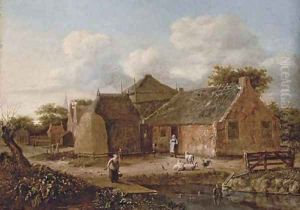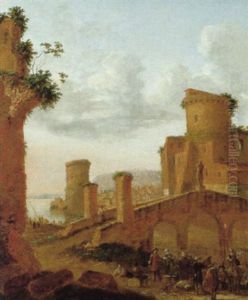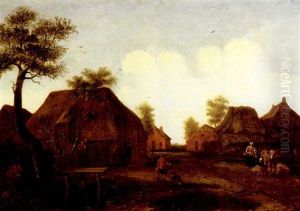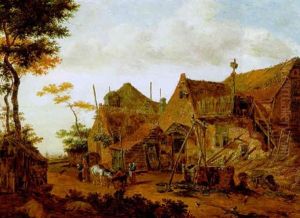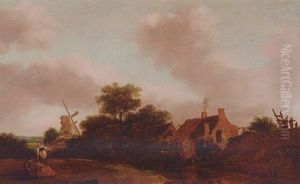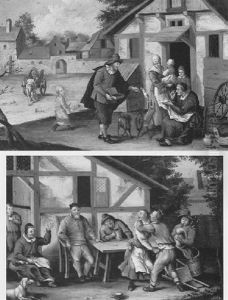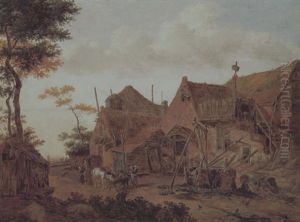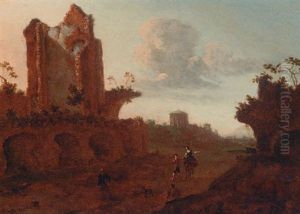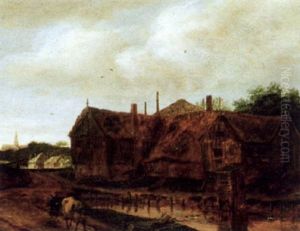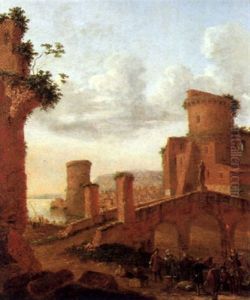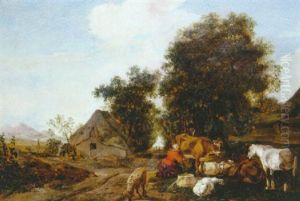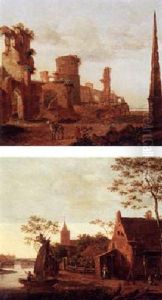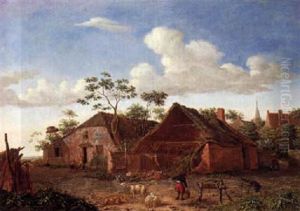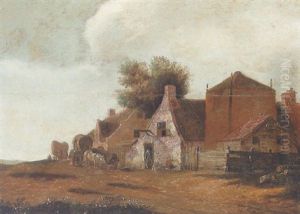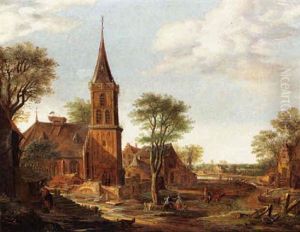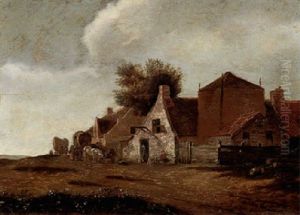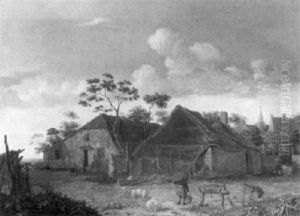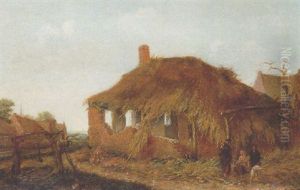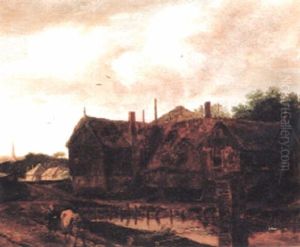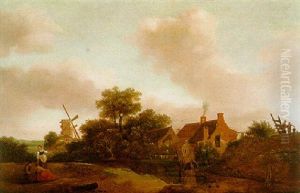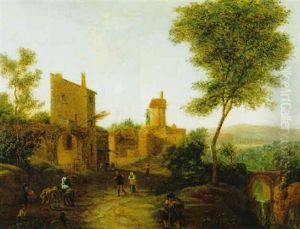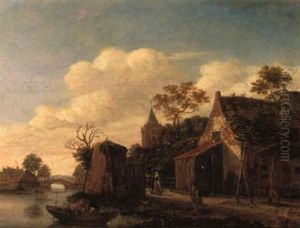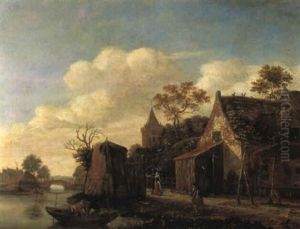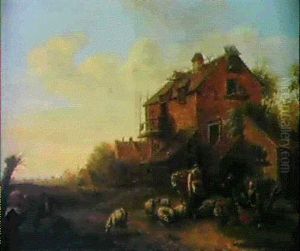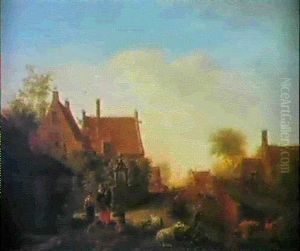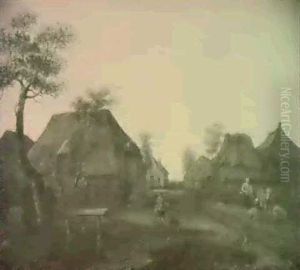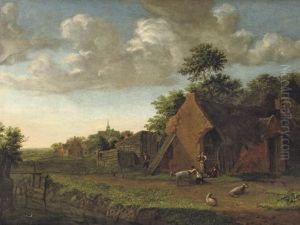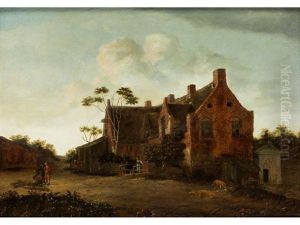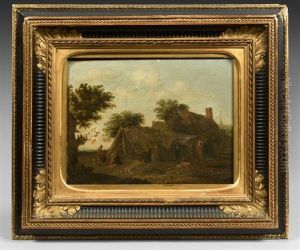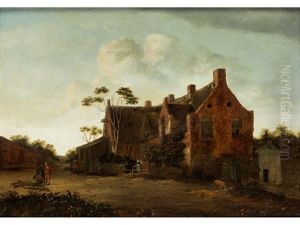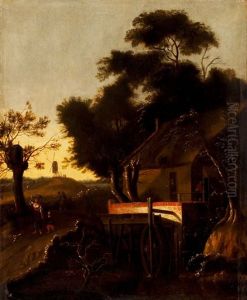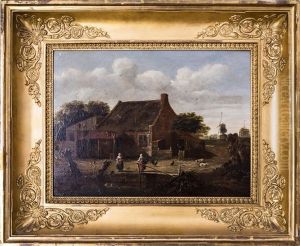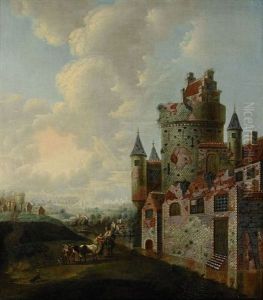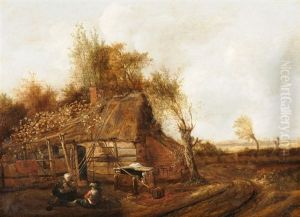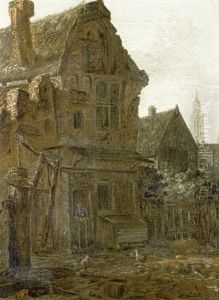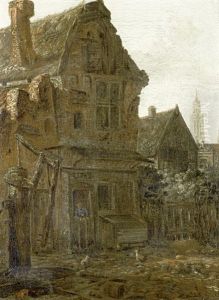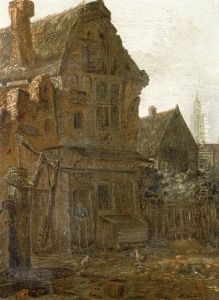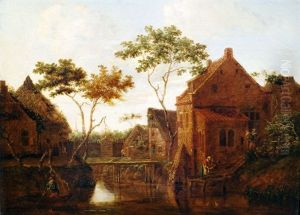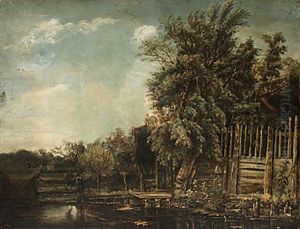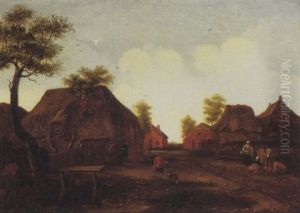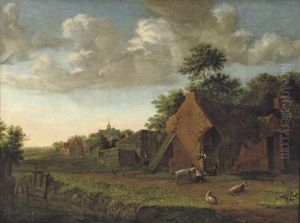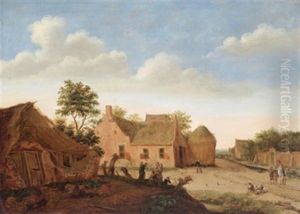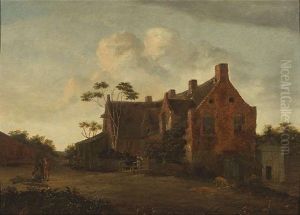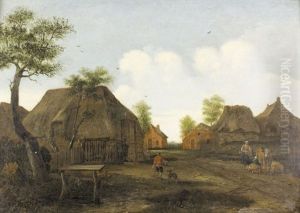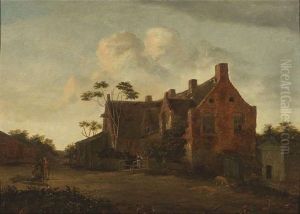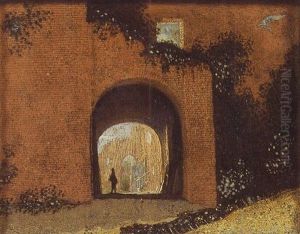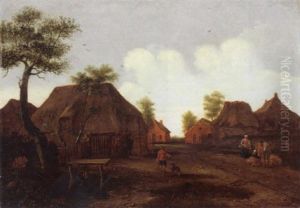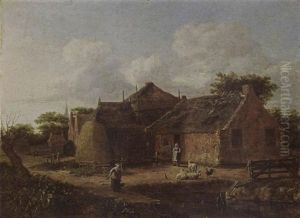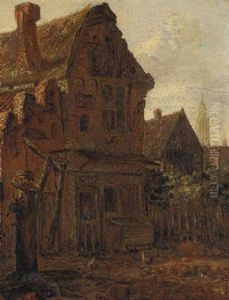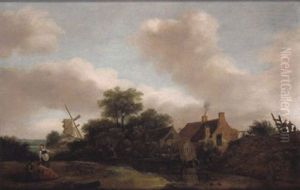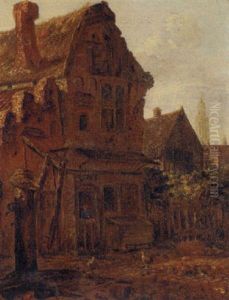Emanuel Murant Paintings
Emanuel Murant was a Dutch Golden Age painter known primarily for his depiction of farmyard scenes and stables. Born in Amsterdam in 1622, Murant was part of a period in Dutch art characterized by a great diversity of artistic subjects, including landscapes, still lifes, portraiture, and genre scenes. His work reflects the interest in capturing the details of everyday life that was prevalent among Dutch artists of the time.
Murant's early life and training are not thoroughly documented, but it is believed that he may have been a pupil of Philips Wouwerman, a Haarlem painter famous for his horses and cavalry scenes. Murant's style does show similarities to that of Wouwerman, particularly in his treatment of horses and the depiction of light. However, Murant's work is distinctive for its quieter, more intimate portrayal of stable interiors and farmyards, often bathed in a warm, golden light that suggests a peaceful, idyllic countryside.
During his career, Murant traveled and worked in various Dutch cities. He spent time in Leeuwarden in the north of the Netherlands, and later in Friesland, where he married in 1661. His paintings from this period show a more rustic and simple life compared to the bustling urban scenes depicted by many of his contemporaries. Murant's ability to capture the texture of brick buildings, thatched roofs, and the rural landscape contributed to his appeal.
Despite his focus on rural scenes, Murant's works often contained figures, usually peasants and farmers going about their daily tasks. These figures are typically secondary to the overall composition, with the main emphasis being on the structures and animals. Murant's paintings are noted for their compositional balance and the sense of tranquility they evoke.
Emanuel Murant's death is recorded as taking place in Amsterdam in 1700. His works continued to be appreciated after his death, particularly for their charming and detailed portrayal of 17th-century Dutch rural life. Today, his paintings can be found in various museums and collections, contributing to the historical understanding of the period's genre painting. Murant's legacy, while not as prominent as some of his contemporaries, remains an important part of the Dutch Golden Age's rich tapestry of artists.
